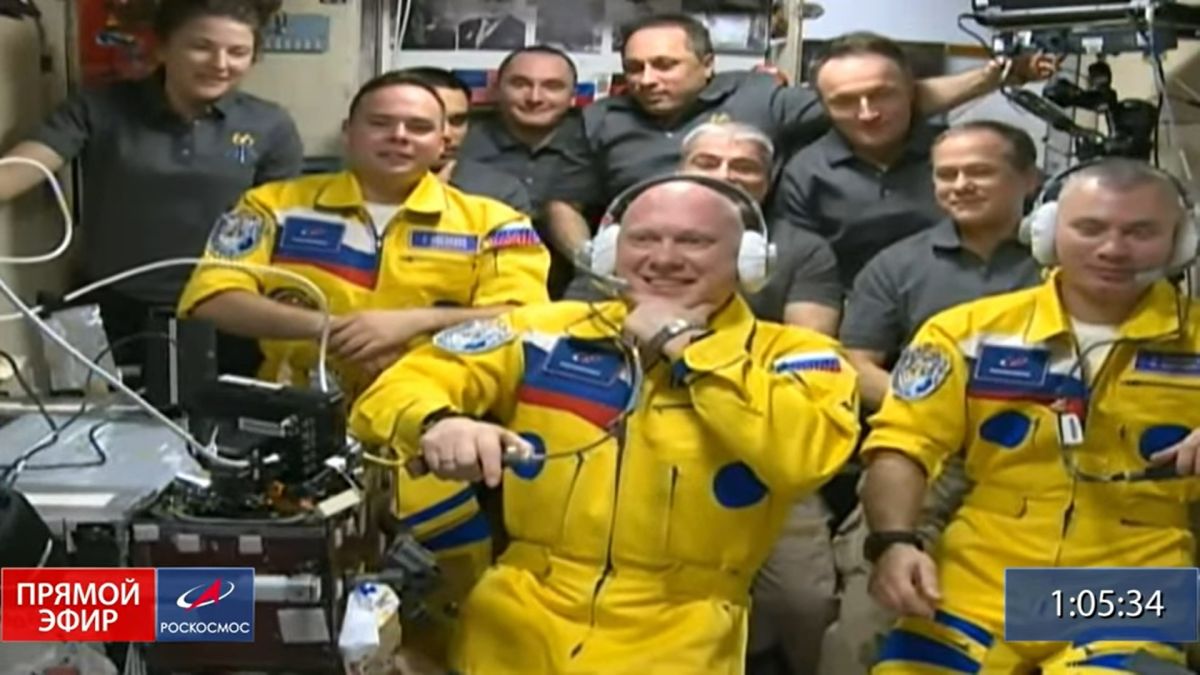The fashion choices of three cosmonauts who just arrived at the International Space Station are raising some eyebrows. A Russian Soyuz spacecraft carrying Oleg Artemyev, Denis Matveev and Sergey Korsakov docked with the orbiting lab’s new Prichal module today (March 18) at 3:12 p.m. EDT (1912 GMT). About 2.5 hours later, the hatches between the two vehicles opened, and the three newcomers floated aboard the station to greet their seven crewmates. Everything went according to plan, but the hatch opening was still surprising, because it revealed that Artemyev, Matveev and…
Read MoreMonth: March 2022
Space Station Science Highlights: Week of March 14, 2022
Crew members aboard the International Space Station conducted scientific investigations during the week of March 14 that included analyzing changes in arteries and muscle tone during spaceflight and conducting a ham radio session.
Read MoreArtemis I in Moonlight
Earth’s Moon is seen rising behind NASA’s Space Launch System rocket.
Read MoreNASA’s Mega Moon Rocket, Spacecraft Complete First Roll to Launch Pad
NASA’s Space Launch System (SLS) rocket with the Orion spacecraft atop arrived at Launch Pad 39B at the agency’s Kennedy Space Center in Florida Friday in preparation for a final test before its Artemis I Moon mission.
Read MoreNASA’s new moon rocket, its most powerful ever, rolls out for 1st time
CAPE CANAVERAL, Florida — NASA’s new megarocket for its Artemis 1 moon mission is on the way to the launch pad. On Thursday (March 17) at 5:47 p.m. EDT (2147 GMT), with the largest doors in the world wide open at the Vehicle Assembly Building (VAB) at NASA’s Kennedy Space Center (KSC) here on Florida’s Space Coast, the rocket that will launch the next astronauts to the moon began rolling out to the launch pad. The rocket — NASA’s Space Launch System (SLS), the most powerful rocket ever built —…
Read MoreStrange dwarf planet Ceres may have formed at the icy edges of the solar system
Paul M. Sutter is an astrophysicist at SUNY Stony Brook and the Flatiron Institute, host of “Ask a Spaceman” and “Space Radio,” and author of “How to Die in Space.” Sutter contributed this article to Space.com’s Expert Voices: Op-Ed & Insights. Ceres, the most dominant member of the asteroid belt, doesn’t look like the other asteroids. Most notably, it has a lot of ammonia on its surface, which other asteroids tend to lack. The only place to get a lot of ammonia is in the outer regions of the solar system…
Read MoreCould the secret of supermassive black holes lie in ultralight dark matter?
Though scientists know there’s a supermassive black hole at the center of most galaxies, they can’t explain how the gravitational giants formed. But physicists Hooman Davoudiasl, Peter Denton, and Julia Gehrlein of the U.S. Department of Energy’s (DOE) Brookhaven National Laboratory in New York have determined one plausible theory: a “cosmological phase transition” of ultralight dark matter. According to the team’s model, supermassive black holes might have formed as the universe was cooling from its hot, dense state — before the formation of galaxies. “When the temperature of the universe…
Read MoreThis Week’s Sky at a Glance, March 18 – 26
Sirius sparkles on the corner of the Meat Cleaver, two open clusters hide under the Cleaver’s handle, Orion’s Belt levels out for the turning of spring, and Venus, Mars and Saturn slow-dance at dawn. The post This Week's Sky at a Glance, March 18 – 26 appeared first on Sky & Telescope.
Read MorePulsar Shoots 7-light-year-long Phaser Blast
Nature proves truth is still stranger than fiction: A pulsar has shot energetic particles in a thin, straight line that extends for light-years into space. The discovery might explain how antimatter makes its way to Earth. The post Pulsar Shoots 7-light-year-long Phaser Blast appeared first on Sky & Telescope.
Read MoreArtemis I First Rollout
NASA’s Space Launch Syste rocket with the Orion spacecraft aboard is seen atop a mobile launcher in High Bay 3 of the Vehicle Assembly Building.
Read More


